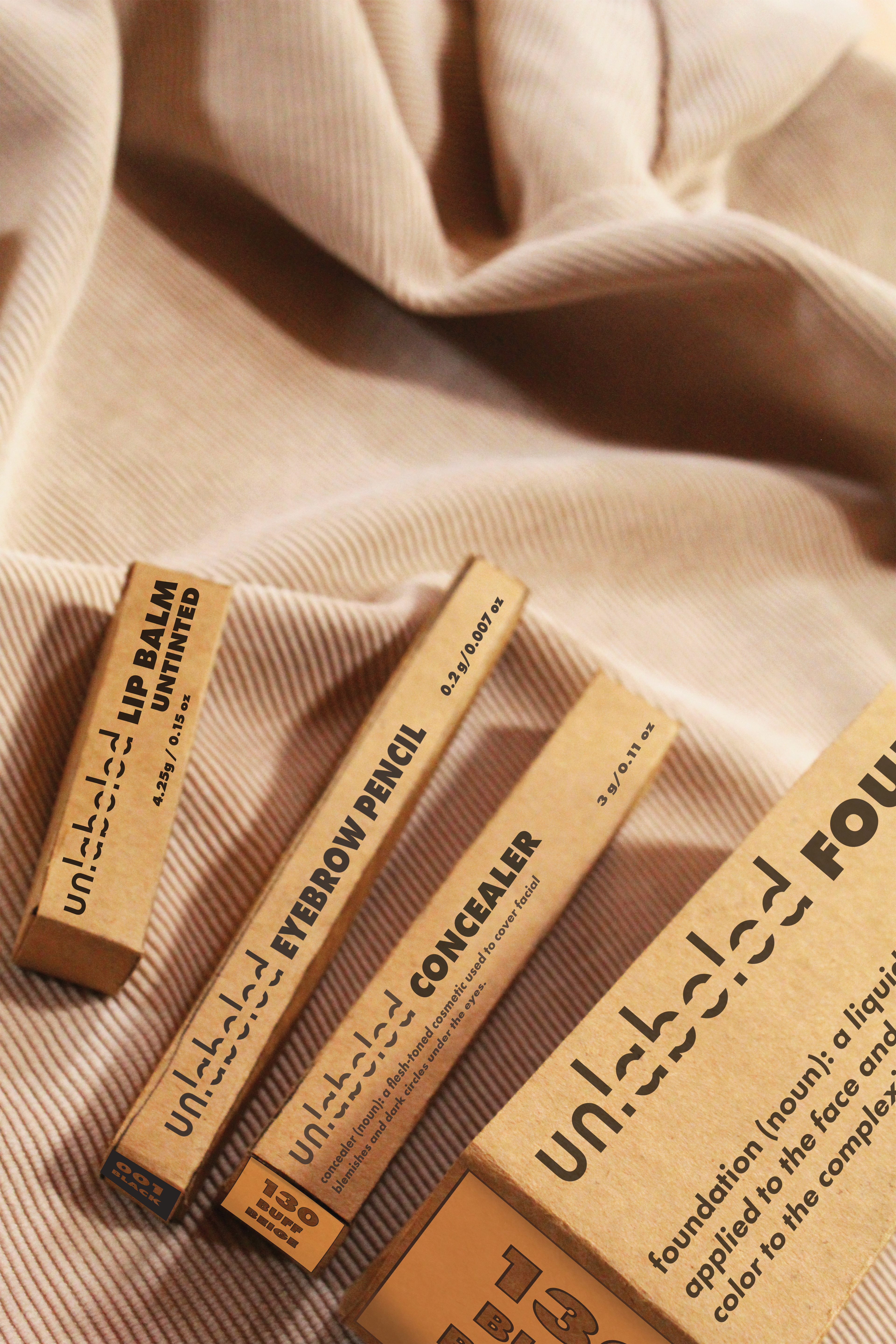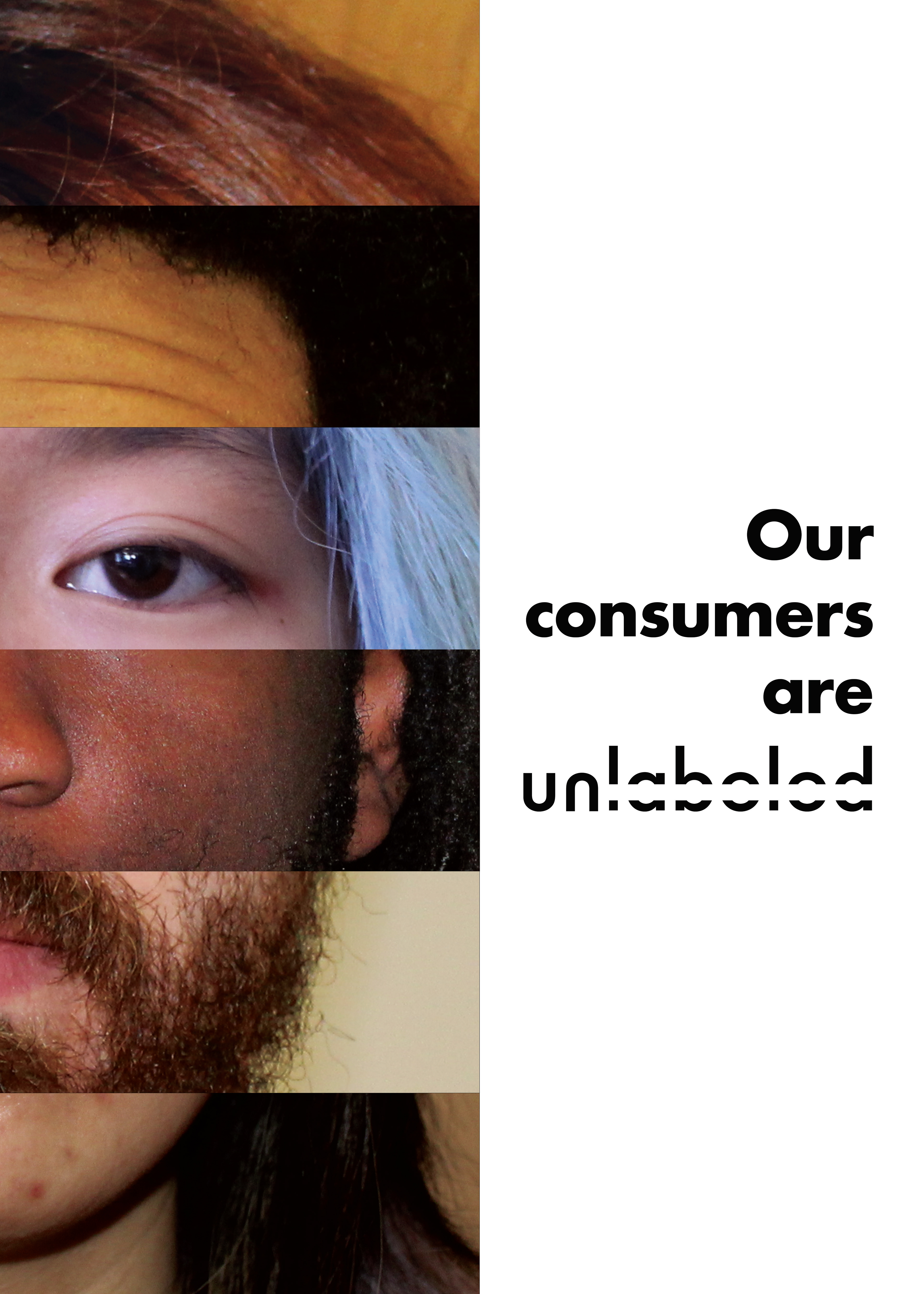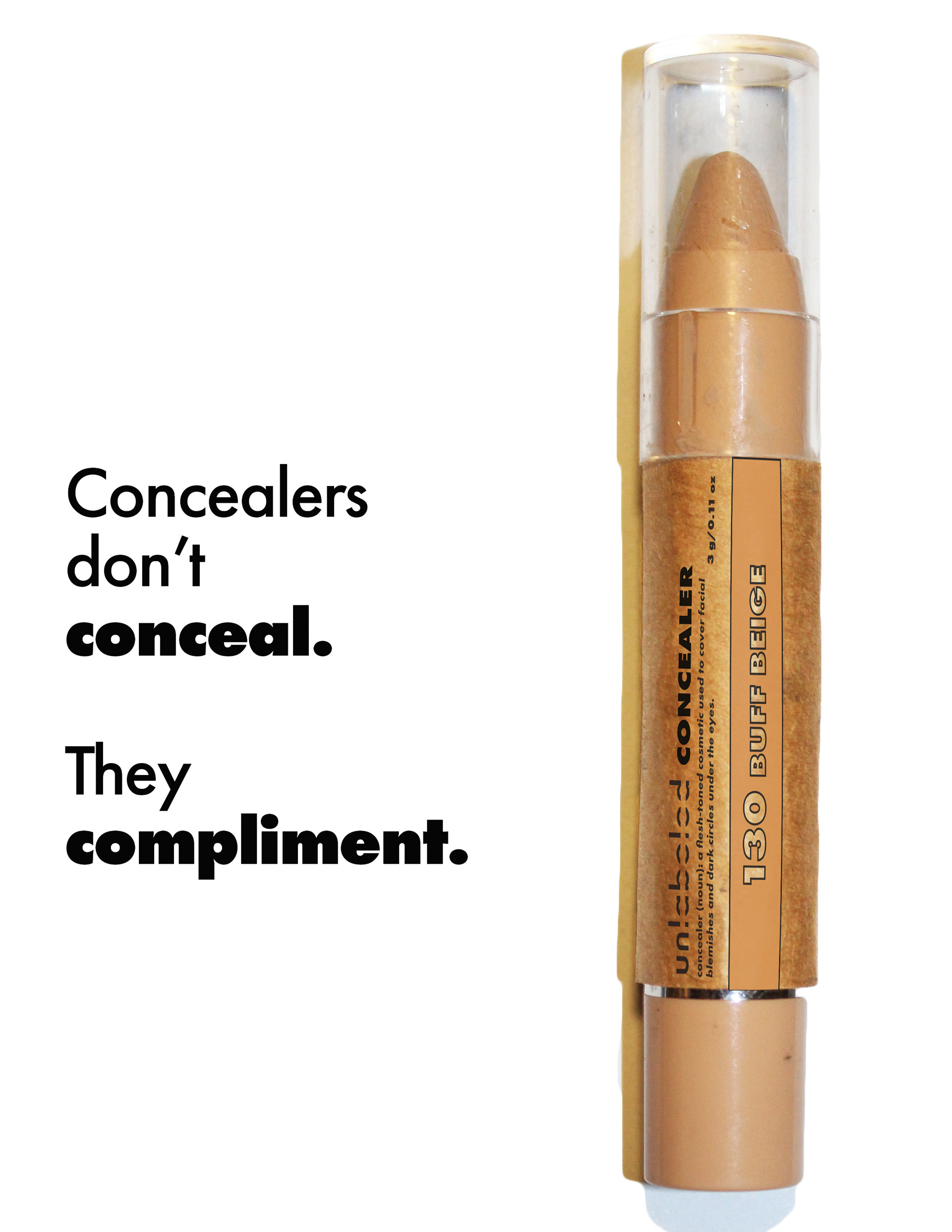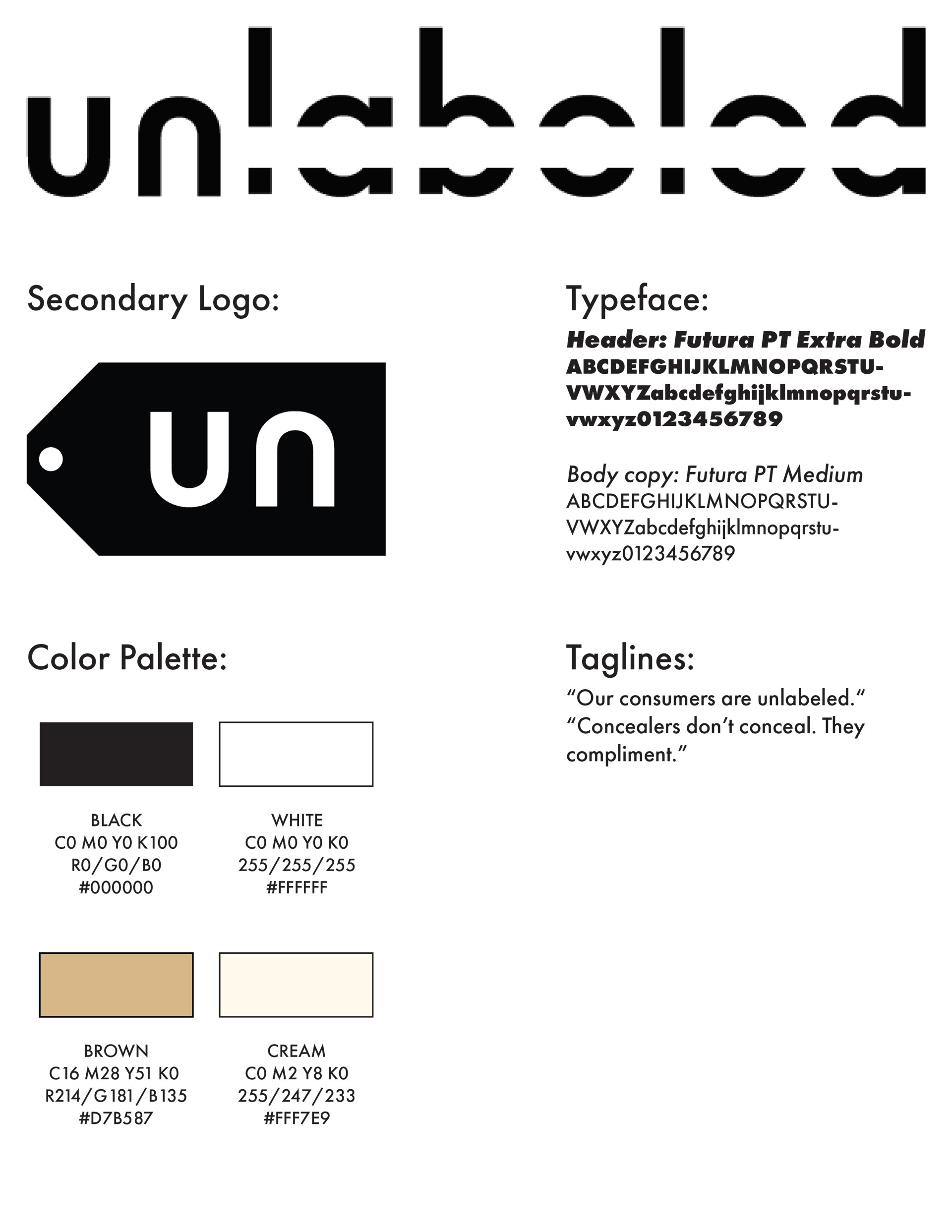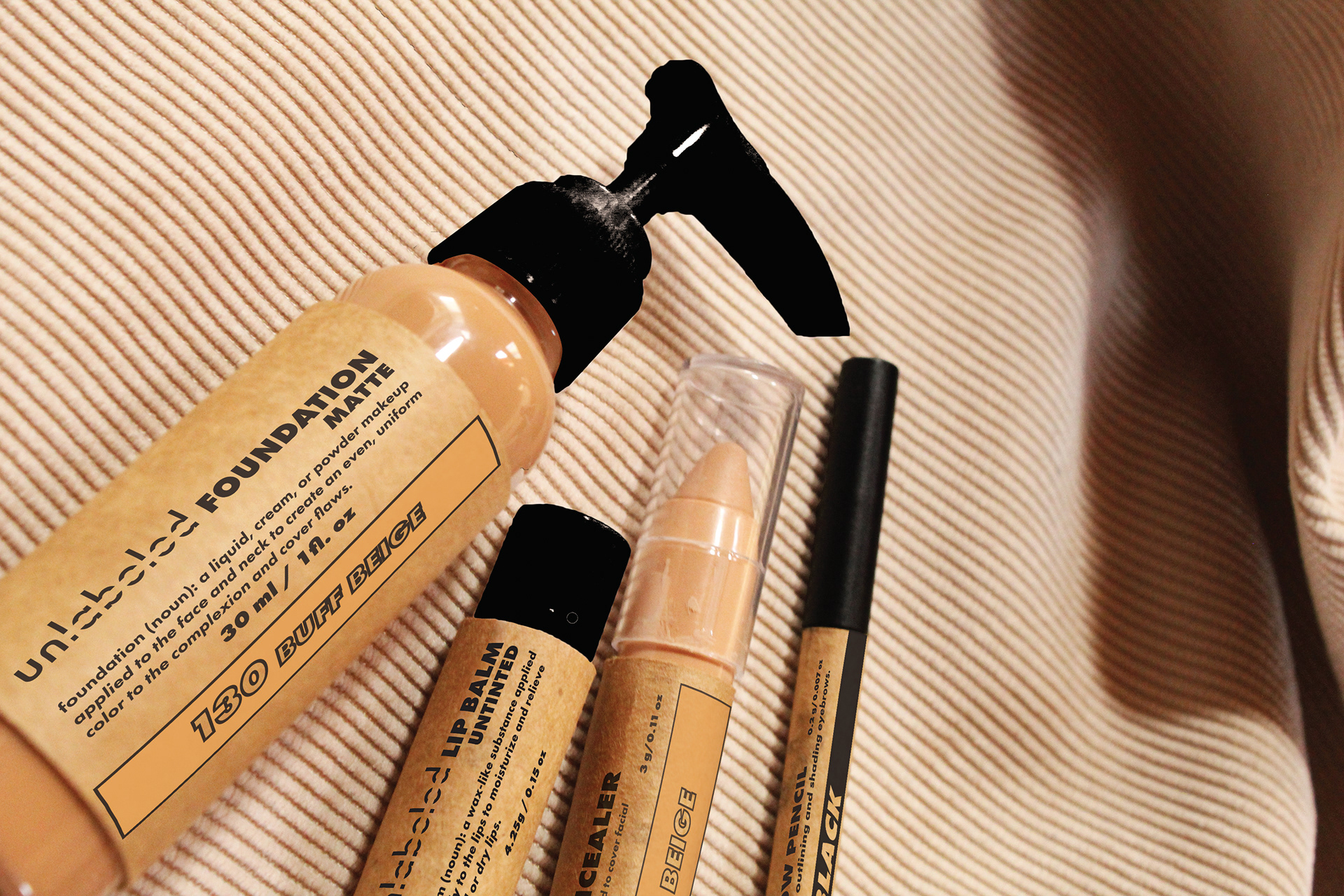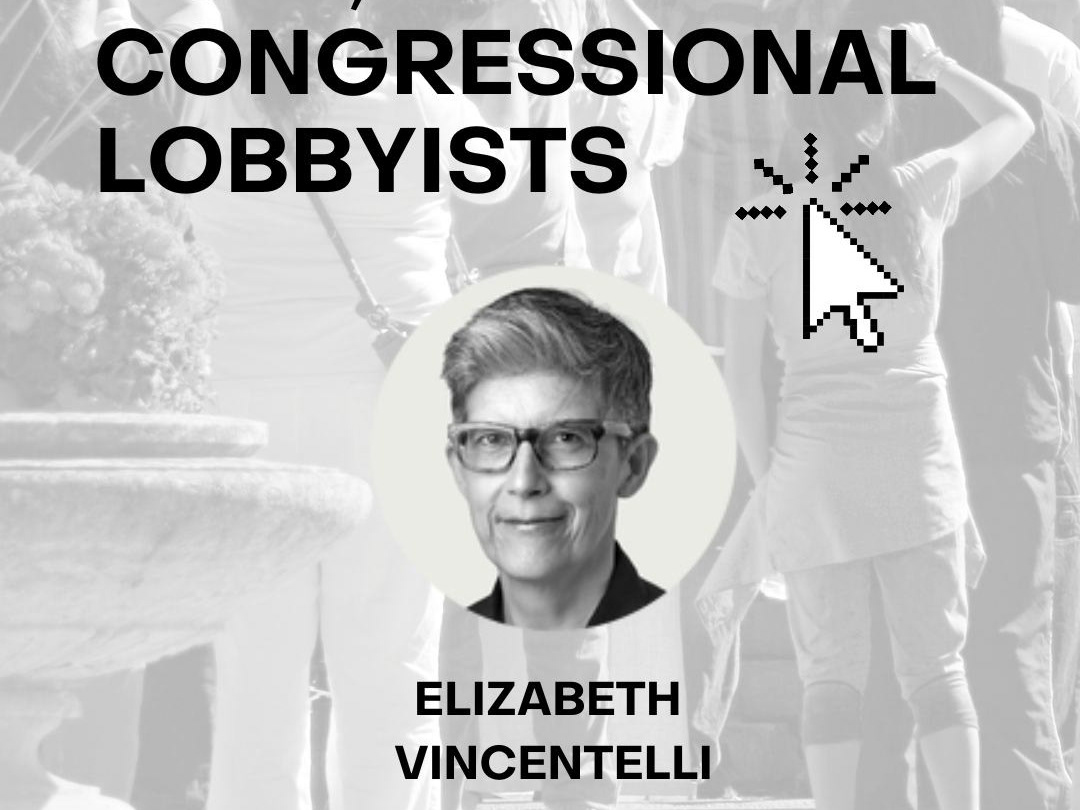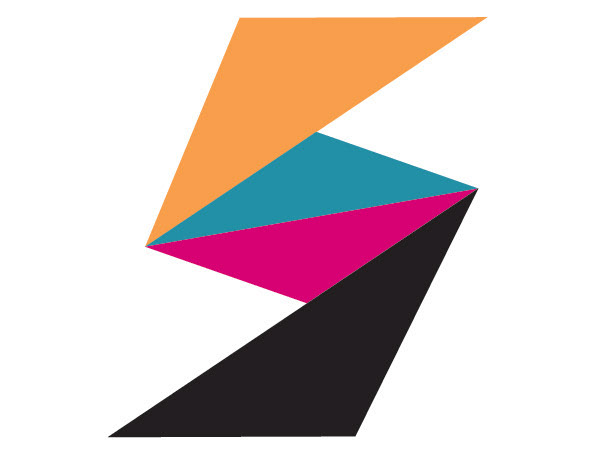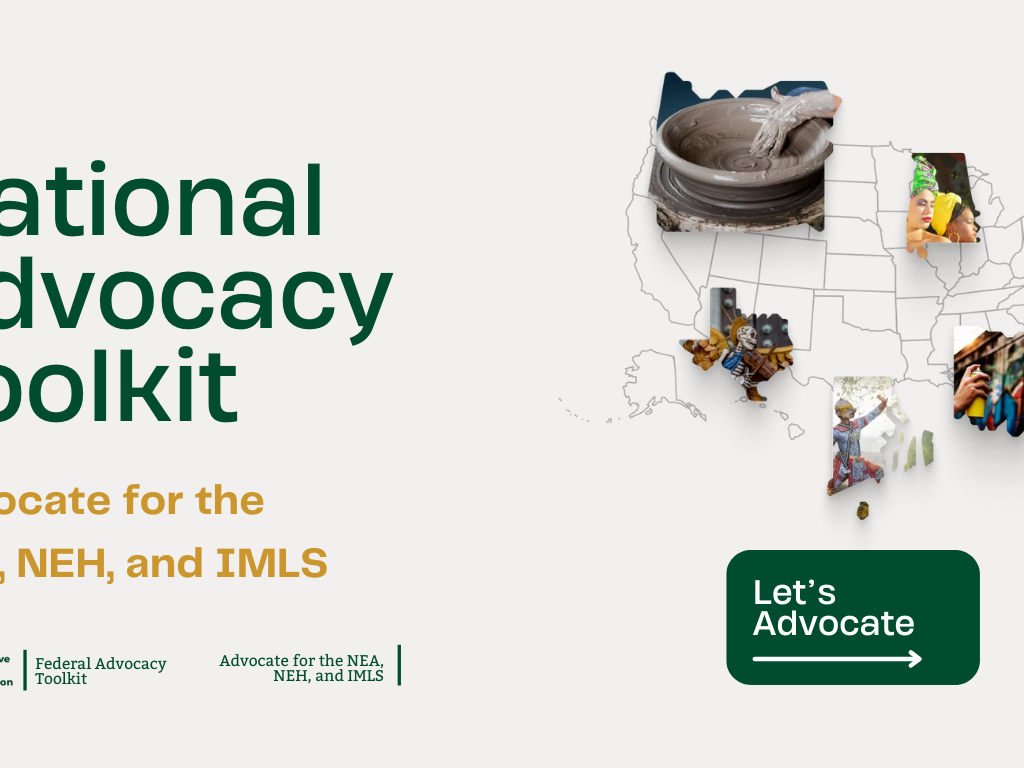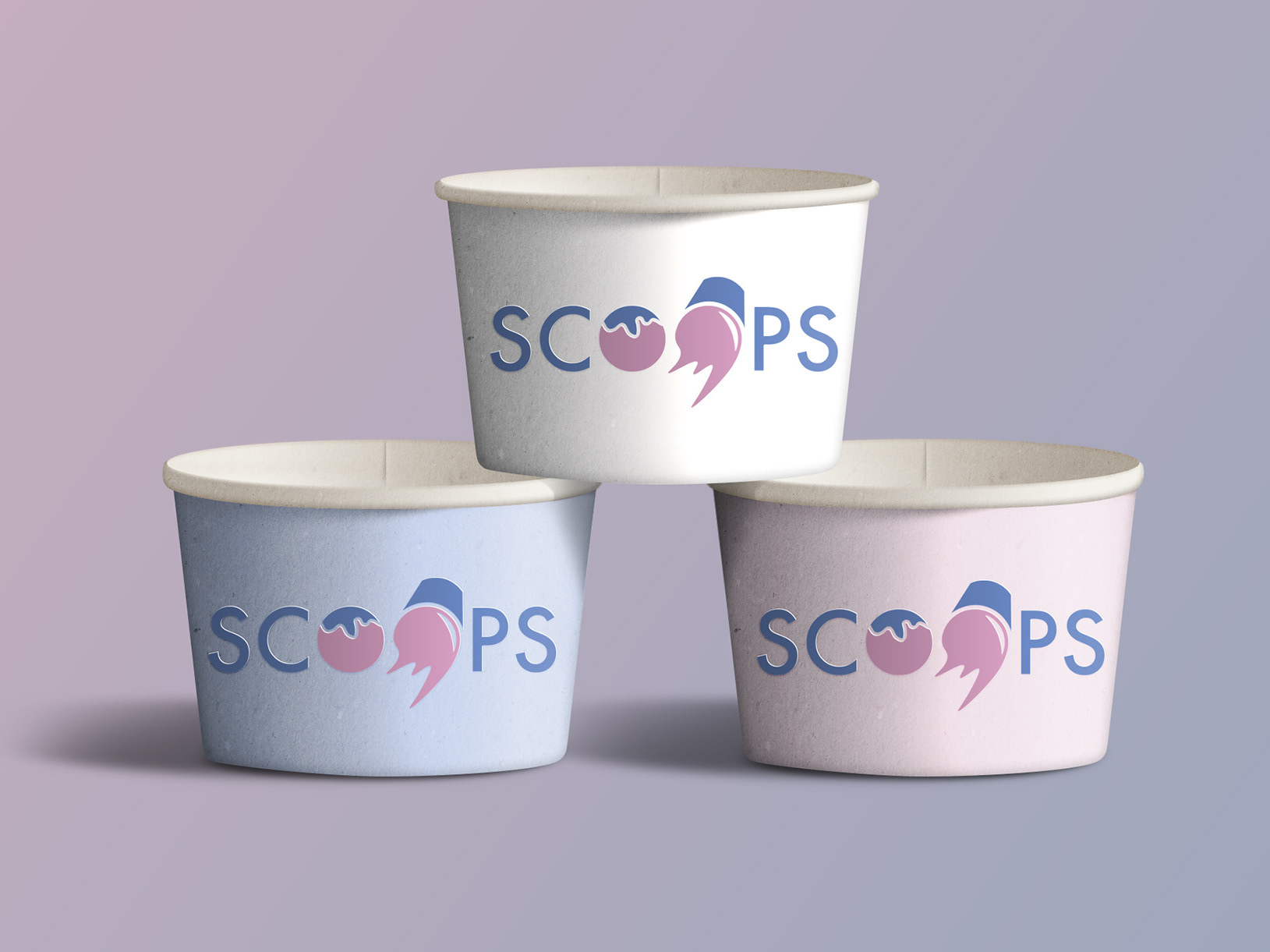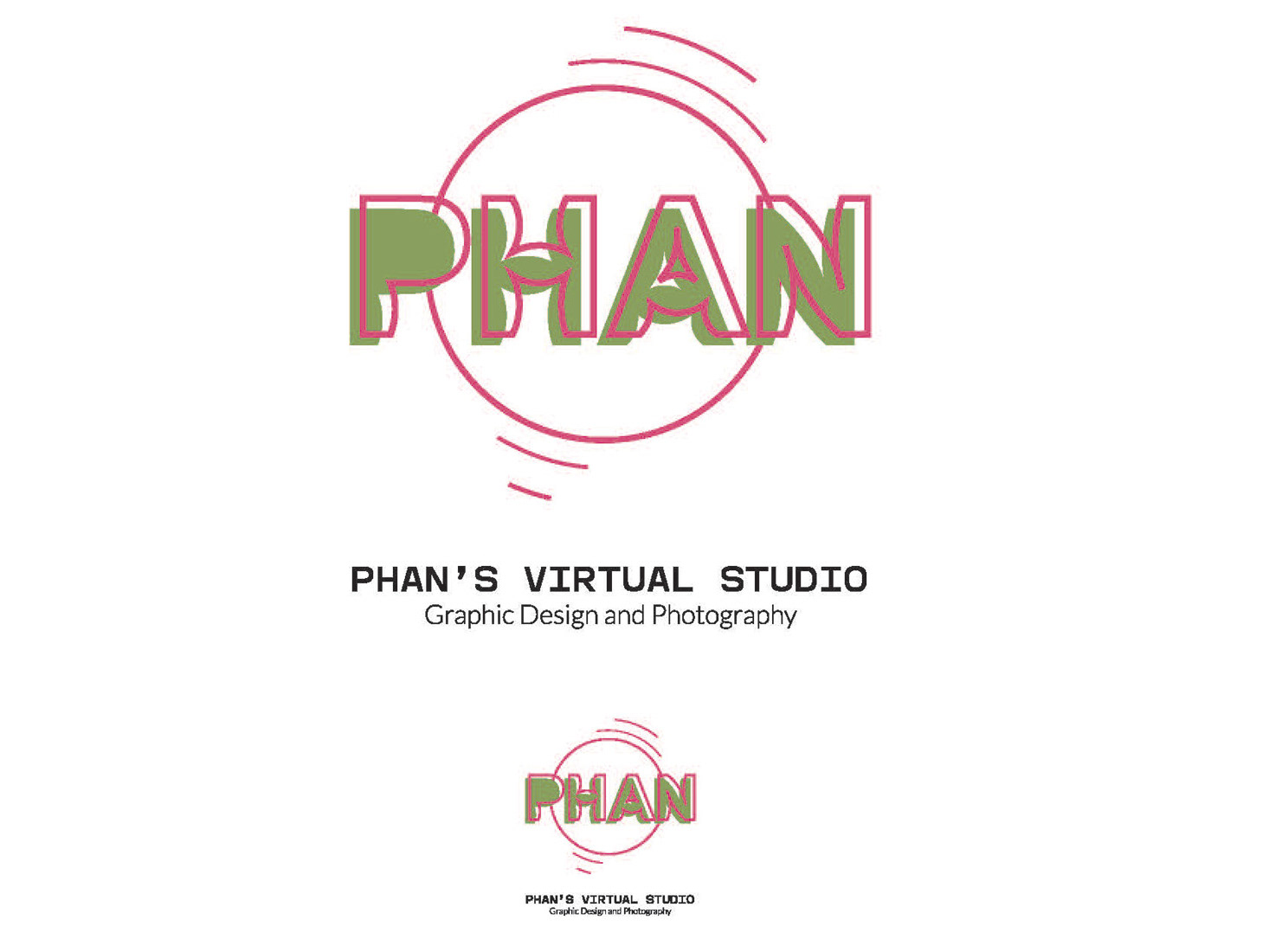Completed as Thesis for Graphic Design at Oakland University, unlabeled is a makeup brand which aims for neutrality across gender identities, ages, races and level of familiarity to makeup. It offers essential makeup products with natural palettes, set out to cater all makeup needs, with stylized industrial packaging that is welcoming to all demographics. With its organic packaging material and stripped down description of the products, the brand "unlabeled" its consumers from stereotypes and stigmas around makeup use.
